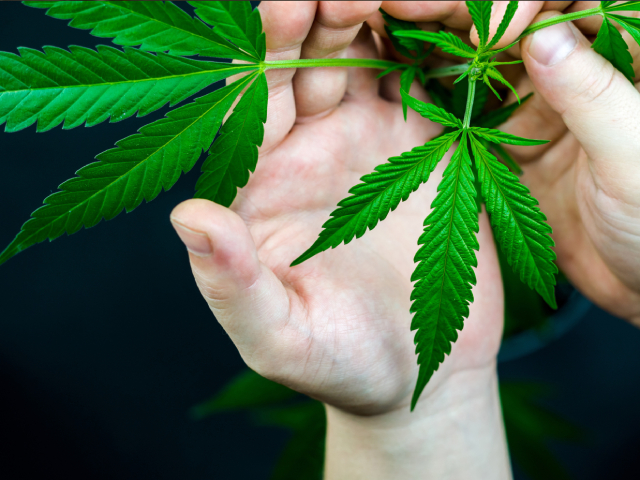Marijuana Addiction Treatment

Overcoming Marijuana Dependency & Rebuilding a Healthier Life
Marijuana is often considered harmless or even beneficial, but for many, its long-term use can lead to dependency, cognitive impairment, and significant disruptions in daily life. While not everyone who uses marijuana becomes addicted, chronic use can create a psychological and physical dependence that affects motivation, mental health, and overall well-being.
At Mission Recovery Home, we provide evidence-based treatment programs that help individuals overcome marijuana dependence, regain mental clarity, and develop healthy coping strategies. If marijuana use is negatively impacting your relationships, work, or mental health, we’re here to help you break free and take control of your future.
What Is Marijuana Addiction?
Marijuana Addiction by the Numbers (National Institute on Drug Abuse - NIDA)
- 30% of marijuana users develop some level of Cannabis Use Disorder.
- 9% of users become dependent, with the rate increasing to 17% for those who start using in adolescence.
- Over 6 million Americans struggle with marijuana addiction annually.

How We Treat Marijuana Addiction at Mission Recovery Home
Step 1: Medically Supervised Detox (If Needed)
While marijuana withdrawal is not life-threatening, we offer supportive detox services for individuals experiencing severe withdrawal symptoms.
Nutritional support, hydration therapy, and holistic care to ease the transition.
Step 2: Residential Inpatient Treatment
Cognitive Behavioral Therapy (CBT) to retrain unhealthy thought patterns and build coping strategies.
Group therapy & peer support to connect with others overcoming addiction.
Holistic therapies such as mindfulness, yoga, and exercise therapy to support mental and physical well-being.
Step 3: Intensive Outpatient Treatment (IOP) & Relapse Prevention
Flexible outpatient care to help clients transition back into daily life.
Ongoing therapy to address emotional triggers, stress management, and social pressures.
Employment and life skills training to help clients rebuild their lives.
Short-Term & Long-Term Effects of Marijuana Use
Short-Term Effects of Marijuana
- Altered perception and impaired coordination
- Memory issues and decreased ability to focus
- Increased heart rate and risk of panic attacks
- Paranoia, anxiety, and hallucinations (especially with high THC concentrations)
- Increased appetite and slowed reaction times
Long-Term Effects of Marijuana Addiction
- Cognitive impairment – Reduced IQ, memory loss, and difficulty with problem-solving
- Mental health disorders – Increased risk of depression, anxiety, and schizophrenia
- Lower motivation and productivity – "Amotivational syndrome" leading to reduced ambition and goal-setting
- Respiratory issues – Chronic cough, lung irritation, and long-term lung damage from smoking
- Dependency and withdrawal symptoms – Irritability, insomnia, cravings, and mood swings
- Emotional instability – Increased depression, anxiety, and suicidal thoughts

The Importance of Seeking Help Now
- Increased risk of mental health disorders, including depression, anxiety, and schizophrenia
- Long-term cognitive impairment, affecting memory, learning, and focus
- Relationship and career struggles due to decreased motivation and productivity
- Legal and financial problems due to excessive spending or workplace consequences

Signs & Symptoms of Marijuana Addiction
Behavioral Signs of Marijuana Addiction
Using marijuana daily or multiple times a day
Feeling unable to function normally without it
Avoiding responsibilities, hobbies, or social events in favor of getting high
Using marijuana despite negative consequences in relationships, work, or school
Experiencing difficulty quitting or cutting back
Physical & Psychological Symptoms
Withdrawal symptoms – Irritability, anxiety, depression, insomnia, and headaches when not using
Memory and concentration issues – Struggling to retain information or focus on tasks
Loss of motivation – Reduced drive to accomplish goals or maintain responsibilities
Increased tolerance – Needing more marijuana to achieve the same effects
What We Hope to Achieve for Every Client
- Freedom from Marijuana Dependence – A structured recovery program that eliminates cravings and dependency.
- Emotional & Psychological Healing – Therapy and support to address underlying mental health struggles.
- A Strong Support System – Encouraging healthy relationships and community connections.
- Long-Term Success & Stability – Equipping clients with life skills, coping strategies, and relapse prevention techniques.

Why Choose Mission Recovery Home?
Personalized Treatment Plans
Tailored to your specific needs, history, and goals.
Evidence-Based Therapy & Support
Including CBT, DBT, group therapy, and holistic treatments.
Expert Medical & Clinical Team
Specializing in addiction recovery and mental health treatment.
Long-Term Aftercare & Relapse Prevention
Ensuring sustained success beyond rehab.

